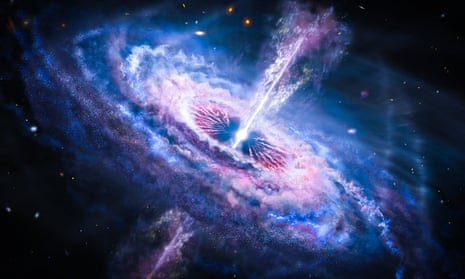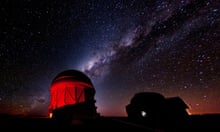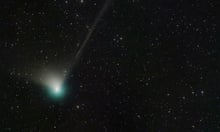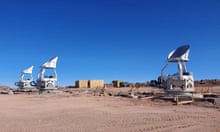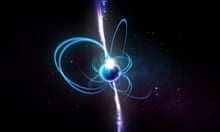Astronomers have watched the distant universe running in slow motion, marking the first time that the weird effect predicted by Einstein more than a century ago has been observed in the early cosmos.
The scientists found that events appeared to unfold five times slower when the universe was a mere 1bn years old, or about a tenth of its present age, because of the way the expansion of the universe stretches time.
“We see things changing about five times slower than today,” said Geraint Lewis, a professor of astrophysics and lead author of the study at the University of Sydney. “It’s like watching a movie with the speed turned down.”
According to Einstein’s theory of general relativity, astronomers should see ancient cosmic events happen more slowly than modern ones. The effect, known as time dilation, is driven by the expansion of the universe, as laid out in the scientist’s fundamental exposition of gravity in 1915.
One consequence of the expanding universe is that light is stretched as it travels across the cosmos, making the wavelength longer. The effect causes ancient galaxies to appear redder than they are, or redshifted. But time is also stretched: if a distant object flashes once every second, the expansion of the universe ensures that more than one second elapses between the flashes by the time they reach Earth.
Astronomers have previously seen stars explode in slow motion, with the flash and fade unfolding at roughly half normal speed, from when the universe was half its present age. But attempts to see time dilation in the very early cosmos by observing extremely bright, distant galaxies called quasars had failed to find the effect.
Lewis and his colleague Dr Brendon Brewer at the University of Auckland ran detailed statistical analyses on 190 quasars observed over two decades and found that contrary to earlier work, cosmic events did appear to unfold much more slowly in the early universe. The key to their success, described in Nature Astronomy, was to find the equivalent of a clock’s tick in the quasars’ rich and erratic light displays.
While astronomers fully expected to see time dilation in the ancient universe and were puzzled as to why earlier work had failed to spot the effect, the prediction still had to be tested, Lewis said. “On some level, this builds confidence that we know how the universe operates,” he said. “We have this picture given to us by Einstein and we test it and test it and test it. A good scientist doesn’t take these things for granted. You have to keep testing.”
Prof Brian Schmidt, an astronomer at the Australian National University in Canberra, who shared the Nobel prize in physics in 2011 for discovering the accelerating expansion of the universe, said science progressed by continually testing the predictions of theories.
“In this case, Lewis and collaborators have extended the time dilation studies undertaken previously with supernovae to larger distances,” he said. “And while they have found that once again general relativity has predicted what has been observed, this clears up some potential concerns around time dilation seen in quasars from other studies.”
